PRESERVING A MILITARY LEGACY FOR FUTURE GENERATIONS
The following Reflections represents Col Christopher Steinhilber’s legacy of his military service from 1987 to 2021. If you are a Veteran, consider preserving a record of your own military service, including your memories and photographs, on Togetherweserved.com (TWS), the leading archive of living military history. The following Service Reflections is an easy-to-complete self-interview, located on your TWS Military Service Page, which enables you to remember key people and events from your military service and the impact they made on your life. Start recording your own Military Memories HERE.
Please describe who or what influenced your decision to join the Marine Corps.
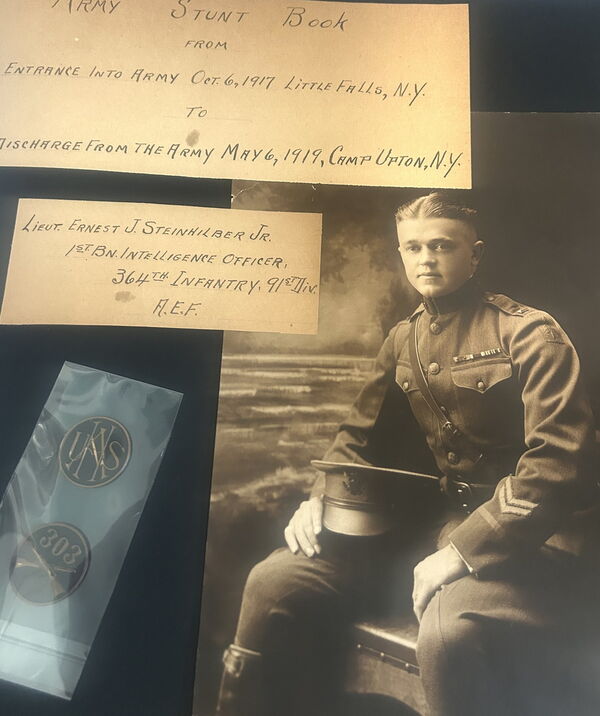
Great question…I don’t think I can pinpoint any one person or a singular event that motivated me to enlist in the Marines in 1986. I was an average (okay, maybe a little below average) student in HS and decided I wanted to enlist in my Junior year as part of the Delayed Entry Program. The idea of four more years of academia at an institute of higher learning did not particularly appeal to me, despite the majority of my peers seeming excited to head off to college. Maybe it was because, like many youths, I questioned what I wanted to do with my life and what my true purpose was. I visited my local recruiter, Staff Sgt. Webster Bridges to find out more information. Unfortunately, in order to enlist at age 17, I needed the permission of my parents, who both wanted me to attend college. They made me a deal that I had to apply to at least one college before they would consider signing my enlistment documents. My mother has heard about a small military college in Vermont, Norwich University, and she insisted on driving me three hours there (one-way) for a visit. I was intrigued by the Corps of Cadets and its regimented lifestyle. However, I was still more interested in enlisting on active duty in the Corps than in pursuing a college education. I begrudgingly completed my Norwich application and short essays and continued to work with the local recruiting office on my enlistment. I was somehow accepted to Norwich, despite my somewhat lackluster HS academic performance. Truth be told, I was more interested in playing sports (lacrosse), street hockey, and other sports with my friends. In the end, I compromised with my parents, who agreed to sign my enlistment documents in the Marine Corps Reserves if I attended Norwich in the fall of 1987.
I remember both my recruiter and my Father questioning why I wanted to enlist in the infantry, as my ASVAB score was good enough to choose another MOS.
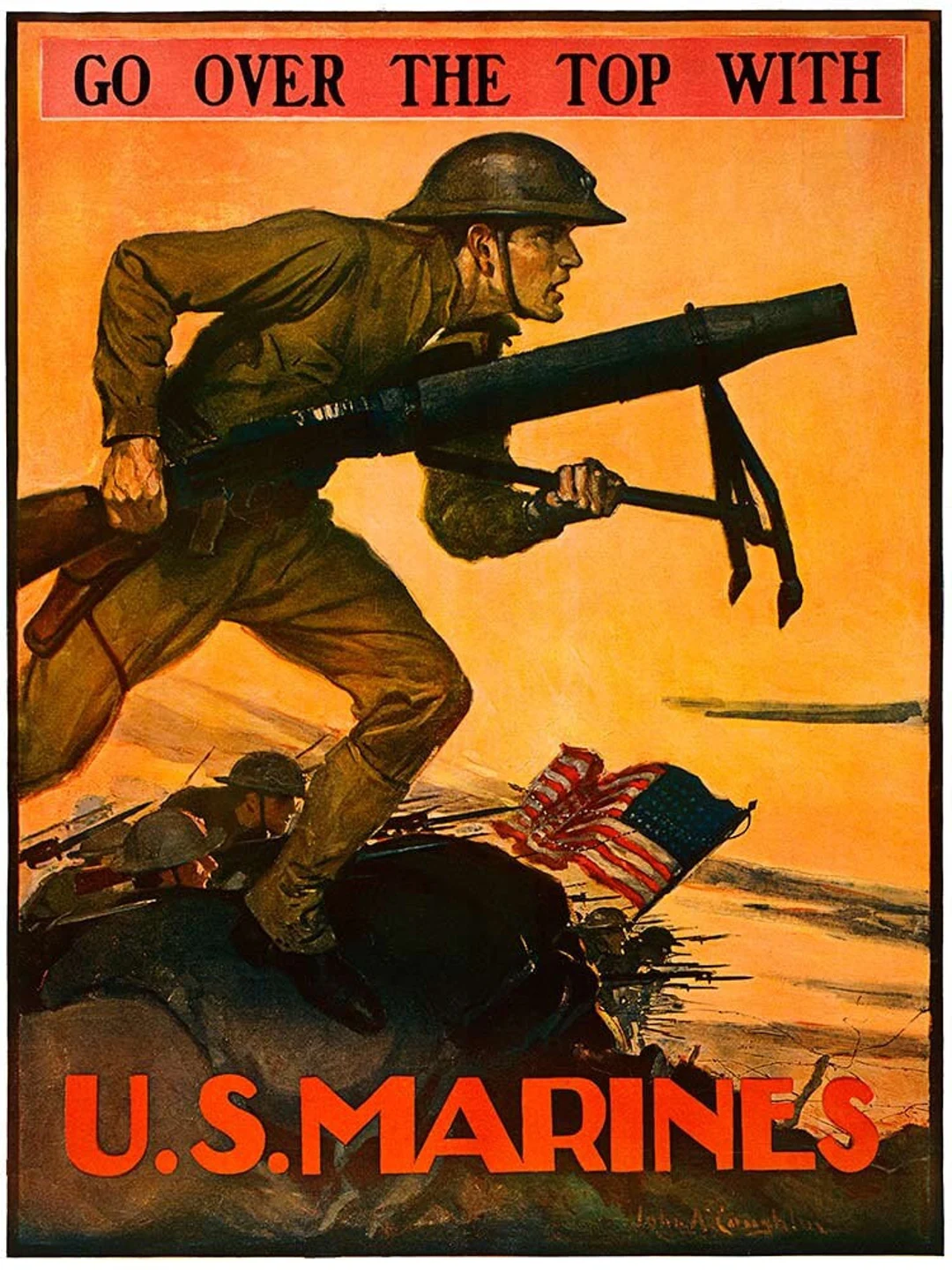
I cannot pinpoint for certain, but my Grandfather had enlisted and deployed to France in 1918 as a young Doughboy with the 303rd Infantry Regiment, 151st Brigade, 76th Division, New England’s Own, which helped establish Camp Devens in 1917, and fought in France as part of the American Expeditionary Force in 1918. I remember growing up and seeing some of the photos from his self-titled WWI “stunt book” and hearing some of his stories as a Doughboy in France. I am sure this influenced my decision to enlist in the infantry and the desire to prove that I had what it took to become a U.S. Marine. In my simple mind, if I were going to join the Marines, I wanted to be in the infantry to test myself and to see if I could hack it. I grew up running around the woods of Concord with an old Utica Arms M1 Garand rifle, playing Army, and enjoying camping out and getting in the mud. I didn’t realize until I started doing research that the Marine Corps even had an Air Wing. I just assumed that every Marine was a ground-pounding grunt. Regardless of your Military Occupational Specialty, the Marine Corps arguably does the best job of the services in teaching entry-level service members basic combat skills. They ensure that all are well-versed in the weapon systems organic to a rifle squad and can perform their missions (offense, defense, patrolling, combat lifesaver skills, call for fire, etc.) regardless of their assigned occupational field. That is why every enlisted Marine undergoes three weeks of Marine Combat Training at the School of Infantry before attending their primary MOS school, and why every officer attends six months of The Basic School before heading to their Primary MOS school.
My Grandfather conducted pre-deployment training at Camp Devens (later Fort Devens) in Ayer, MA…Oddly, this is the same base where I would train 70 years later, with Bravo Company, 1/25, before deploying to the Persian Gulf for Desert Shield/Storm. I look back now and am a bit in awe that I trained on the same real estate that my Grandfather and his fellow Doughboys did before WWI, and have some photos of them training and digging trench lines. I recall my Grandfather talking a little about some of his experiences as a ‘footslogger’ (foot soldier or infantryman). There was a terrible outbreak of the Spanish Flu aboard the camp (and across the United States). By the end of September 1918, more than 14,000 flu cases had been reported at Camp Devens, accounting for approximately one-quarter of the total camp population, resulting in 757 deaths. During his time in France as an infantry NCO, he was selected to attend officer training, and upon successful completion, he was commissioned as a Second Lieutenant in Intelligence. I still have copies of a number of the written exams and other documents (maps, a few pictures, and medals) that he preserved in his WWI stunt book. I suspect it did not hurt his selection to the Intelligence field in that he was fluent in German, as his Father had immigrated to upstate NY from Southern Bavaria (Dietenheim).
Whether you were in the service for several years or as a career, please describe the direction or path you took. Where did you go to boot camp, and what units, bases, ships, or squadrons were you assigned to? What was your reason for leaving?
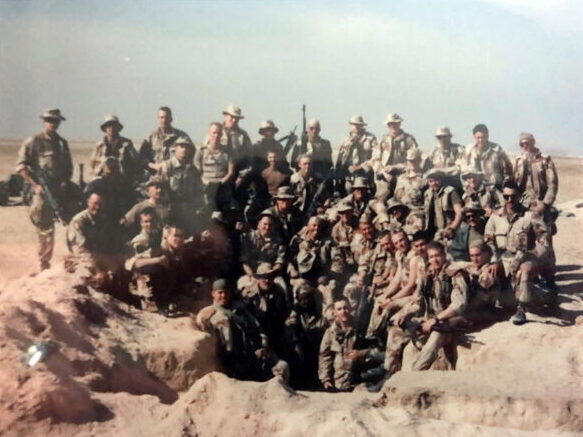
I retired in July 2021, approximately 34 years of Service (June ’87-July ’21). I didn’t enlist with the intention of necessarily making the Marines a 30+ year career. I know I wanted to challenge myself to see if I had what it took to become a Marine. After spending time in the Marine Reserves with B Co 1/25, a rifle company in Manchester, NH, and deploying to Desert Shield/Storm as a machine gun team leader, I was still very interested in pursuing a commission in the Corps, as were many of my fellow Norwich Cadets. Although I participated in Navy ROTC at Norwich (as well as some time in Army ROTC, which I enjoyed more due to the infantry tactics and field exercises), Navy ROTC was not my source of commissioning. After graduation, I applied for the Officer Commissioning Class, which only required a four-year degree, good grades, and that I was physically and mentally qualified. I was a newly promoted Sergeant at the time, and despite having decent grades, recommendations from my leadership, and a letter from a Medal of Honor recipient (Captain Thomas J. Hudner USN, Korean War pilot), it was still extremely challenging to get a slot to attend OCS, largely due to the post-Gulf War drawdown. Marine Corps OCS is designed to screen candidates to see if they have the physical and mental aptitude and demonstrate leadership potential to be an officer. I certainly had a “leg up” with my prior enlisted experience and my leadership and experience gained from attending The Military College of Vermont, and I was able to help my fellow candidates with no previous military experience.
After a chilly winter OCS class (Oct-Dec 92), that included breaking ice in The Quigley, it was off to six months of The Basic School. I was lucky enough to have Not owning a vehicle, I bought a train ticket from Boston to Quantico, VA, and after a nice meal with my parents in Boston, they dropped me off at South Station with my seabags to embark on my career as a Marine officer. Bravo Co BOC was commanded by Major, now Retired Brigadier General Joseph Medina. He is a fantastic leader who commanded one of the first Expeditionary Strike Groups. I recently reconnected with him and am happy to see he is doing well. Due to my prior enlisted experience, I was assigned as the Company 1stSgt for the first couple of weeks of TBS. Needless to say, herding six platoons of newly minted Lieutenants can be no easy task, and the Executive Officer, Captain, now retired Col John Nettles, kept us hopping. Although we had female Lieutenants in the other platoons, I was in the only all-male 6th Platoon, commanded by 1st Lt., now-retired Col. Ralph Dengler. He was a hard-nosed New Yorker, Naval Academy rugby player, and infantry officer who understood the old adage, the more you sweat in peace, the less you bleed in war…and 6th Platoon did plenty of sweating. While other platoons hike to the rifle range on Application Trail, we did a combat shuffle. We became familiar with log PT and steam crossings, and we prided ourselves on being a rough and tumble physically capable group. I still keep in touch with several of my BOC classmates, and we even had a 25th reunion in 2018 in DC/Quantico, where I reconnected with Ralph Dengler and others. Following graduation from The Basic School, it was a short “seabag drag” to the bottom deck of Graves Hall to the Infantry Officers Course billeting area. The IOC was a ten-week whirlwind of weapons and tactics under the command of Major, now retired Colonel Sword. We spent the majority of our time in the field learning about the various roles of an infantry leader.
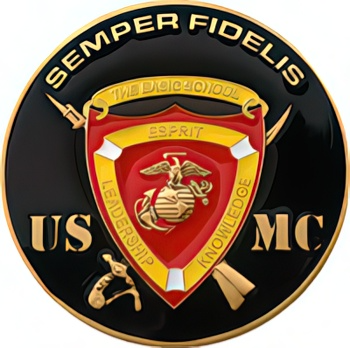
My previous experience in the grunts and Weapons Platoon experience in the 60mm Mortar Section and M60E3 Machine-gun section stood me in good stead when I was assigned to Bravo Co, Wpns Platoon 1/5, 1st MARDIV aboard Camp Pendleton. I was excited to receive orders to the West Coast and Camp Pendleton, and took full advantage of living in San Clemente with some fellow infantry officers, about three miles from Camp San Mateo in the 62 Area, home of the Fighting 5th Marines, which Col. J.J. Shefferman commanded at the time. I thoroughly embraced my time as a platoon commander. My first Platoon Sergeant and former Drill Instructor, SSgt Mike Kufchak, was an outstanding SNCO, and we made a great team, spending lots of time in the field and hiking the steep hills and ridgelines surrounding San Mateo. I was selected to attend the Summer Mountain Leaders Course at the Mountain Warfare Training Center in Bridgeport, CA. This was a very physically and somewhat mentally challenging course that taught you mountaineering skills and how to lead and fight in arduous terrain. The course culminated with summiting Mount Shasta and learning to operate on a glacier (crevasse rescue, glasding, ice climbing). We finished the course with over 50% attrition, including one Lt from my battalion (not me, thankfully).
returned to 1/5 and was assigned to the Anti-Armor Platoon in Weapons Company, commanded by Captain, now retired Lieutenant Colonel E.D. King. In Wpns Co, we had all the heavy weapons systems organic to the battalion. We were expected to provide general and direct support to the rifle companies, which were the maneuver elements of the battalion. We were given the autonomy to develop and execute our own independent training plans, as long as they met Captain King’s intent. As my Platoon was also supposed to be demolitions experts in the absence of combat engineers, we would often host battalion demo shoots, bringing all the 0351s from across the battalion to learn the intricacies of effectively employing demolitions to create obstacles and canalize the enemy. We built obstacle plans and would practice using demolition and other means to breach and assault an enemy defensive position. To say this was some great training would be a gross understatement.
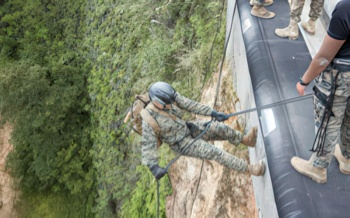
I was blessed with another outstanding Platoon Sergeant, SSgt Chris Yates, who was very experienced and went on to become a Marine Gunner (Infantry Weapons Officer). I had the opportunity to deploy the Platoon to Okinawa as part of the Unit Deployment Program, where we trained on the island as well as on the Korean Peninsula. We spent a considerable amount of time patrolling the jungles and executed several training packages at the Jungle Warfare Training Center in the Northern Training Area, including jungle survival techniques. They had a fantastic jungle obstacle course that you would run as a squad with your combat load. I recall lots of repelling, climbing, and crawling through the thick mud in humid, hot tropical terrain. I doubt anyone could have fired their rifle at the end without running a bore punch and scrubbing off the caked-on mud! The NTA was, needless to say, some pretty arduous and unforgiving terrain, and I recall some tough night patrols and night land navigation as Marines and Corpsmen attempted to navigate thick jungle with steep ravines, draws, and fingers. It?s a wonder we didn?t seriously injure anyone. It is hard to be ?tactical? when you are falling down a ravine in the black of night…And not to mention the venomous Habu snakes that made the jungle their home.
If you participated in any military operations, including combat, humanitarian, and peacekeeping operations, please describe those that made a lasting impact on you and, if life-changing, in what way?
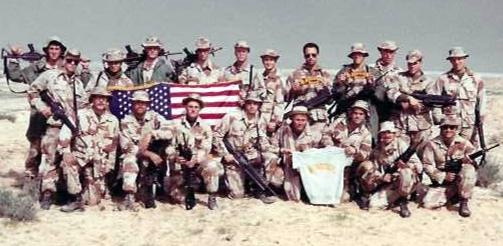
I participated in several combat operations, as well as numerous humanitarian assistance operations, during my time in service.
OP DESERT SHIELD/STORM 1990-92(Saudi Arabia & Kuwait)
TASK FORCE WILDFIRE 1994 (WA State and MT)
OP SEA SIGNAL/SEA ANGEL 95 (Gitmo)
OP MARATHON 96 (Gitmo)
OPERATION ENDURING FREEDOM (Camp Lemonier, Djibouti) 2004-05
OPERATION SANGIN SUNRISE (OEF Nimruz Province AFG) 2010-11
OPERATION IRAQI FREEDOM 2007-08 (Haditha Triad Al Anbar Province, Iraq)
OPERATION CLEAR ABU HYATT 2007 (Abu Hyat, Iraq)
Did you encounter any situation during your military service when you believed there was a possibility you might not survive? If so, please describe what happened and what was the outcome.
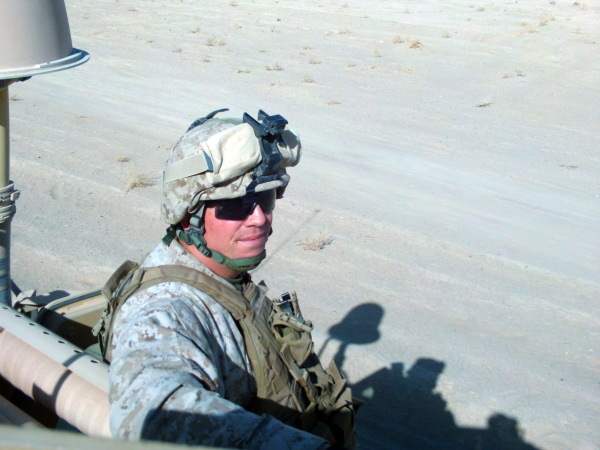
I recall a few tense moments during Operation Desert Shield, when we were dug in for a company defense and there were reports of enemy activity. We were not mechanized or motorized, so it would have been a bit challenging for a rifle company with no heavy weapons to defend ourselves against a mechanized attack. We saw a lot of the damage from the air war once we made our way into Kuwait, but we were not involved in any direct combat operations.
I recall my first combat deployment in support of Operation Desert Shield/ Storm. I was in my Senior year at Norwich University and assigned to Bravo Company, 1st Battalion, 25th Marine Regiment (B Co, 1/25) in Manchester, New Hampshire, as a machine gun Team Leader in the Weapons Platoon. We mobilized just after Thanksgiving in 1990, and after a few days at the drill center, drawing gear, and completing pre-deployment processing, we shipped out to Camp Lejeune, NC. During our time aboard CLNC, we conducted pre-deployment training for approximately a month, focusing on live-fire training, Military Operations in Urban Terrain (MOUT), and Nuclear, Biological, and Chemical (NBC) training. I recall going through various processing stations at the main side fieldhouse, where we received a number of shots, including the unpleasant Gamma Globulin shot in the butt. We were left feeling like the proverbial human pincushion. We spent a relatively uneventful Christmas (no leave was authorized, as I recall) at CLNC and boarded planes on December 31 to deploy to Saudi Arabia. We were initially sent to Manifa Bay, Saudi Arabia, where the First Marine Division was located. 1/25 was reassigned to the 1st Marine Division, where we joined Task Force Grizzly. 1/25 assumed the mission of being a special prisoner handling unit. Intelligence estimates predicted that the major ground offensive operation would produce a large number of enemy prisoners of war. There was concern that enemy hordes could seriously impair mechanized forces. Each division, therefore, established a special enemy prisoner-of-war handling unit, and 1/25 was designated to perform this mission for the Blue Diamond.
I do not recall conducting any extensive EPW handling/training and relied largely on those basic skills we learned from the school of Infantry (the old 5 S’s & a T). I recall having to search and process a large number of EPWs. We did not have much support from linguists, but it was clear that the majority of these conscript Iraqi soldiers were glad to be out of the fighting. We had no tents for them, and managed to get some blankets and some MREs to feed them. I recall a pretty intense sandstorm and rainstorm rolling through one night, making for a miserable experience for all. Over the next day or so, we loaded this scraggly lot of conscript Iraqi soldiers on buses back to Saudi Arabia. I always wondered what the repatriation process was for these EPWs and how many of them were anxious to return to Iraq, which was still under the iron rule of Saddam and the Ba’ath Party. On G Day, when the 1st Battalion, 5th Marines, and 3rd Tank Battalion from the 1st Marine Division were breaching a minefield, they became inundated with surrendering Iraqi soldiers. 1/5 dismounted an infantry company to deal with the prisoners, whose numbers quickly swelled to nearly 1,300. Within two hours of the engagement, elements of 1/25 arrived to secure the prisoners. This allowed 1/5 to proceed with the advance without delay. Little did I know that I would be serving as a platoon commander with 1/5 a few short years later.
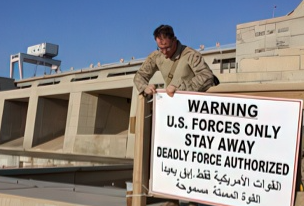
During my time in Iraq in 2007 as the Current Operations Officer for Task Force 3rd Battalion, 23rd Marine Regiment (TF 3/23), I spent most of my time managing the operations center for the Battalion in Haditha, overseeing day-to-day operations. I did manage to get outside Forward Operating Base in Haditha when I could to interact with the local Iraqi police or command a security element during a tour of our AO by senior military and civilian leadership. I had the opportunity to meet Senator John McCain when he visited Haditha for a tour.
There were a few times during my tour advising the Second Brigade, 215th Corps of the Afghan Army 2010-11V that we had some close calls with direct fire, indirect fire, and lots of IEDs during Operation Sangin Sunrise. We suffered some casualties and had one of our NCOs with the Deleram Police Advisor Team, Corporal Joshua Dumaw, killed in action by an Improvised Explosive Device (IED) on June 22, 2010. I recall having to carry his body to the helicopter at Forward Operating Base Deleram 2 for transport back to Camp Leatherneck. Cpl Joshua Dumaw left behind a young wife and a baby boy, who was born while we were deployed. I was quite frankly more concerned about having my Marines or Sailors killed or wounded than I was about myself being wounded or killed in action. My MATV up-armored vehicle was struck once while on patrol to one of the Afghan patrol bases. Fortunately, it was not catastrophic. We did have to MEDEVAC my Team Chief, GySgt Mann, and a couple of others after an IED strike, which was fairly common, unfortunately, especially the closer you got to the Iranian border. I recall one mission toward the city of Zaranj in southwestern Afghanistan near the Iranian City of Zabol, where the Taliban had placed hundreds of IEDs in culverts and other places along Route 606. As soon as we cleared the road and continued to move closer to Zaranj, the Taliban would come behind us and place more IEDs. We escorted the Afghan Military closer to Zaranj to set up a forward operating base in order to replace some of the Georgian Army forces. On the return route to Deleram, we spent a lot of time driving off-road to avoid the IEDs we knew had been placed. It was a long and tiring operation, but we finally made it back to Deleram without losing any personnel or vehicles to the enemy.
Of all your duty stations or assignments, which one do you have fondest memories of and why? Which was your least favorite?
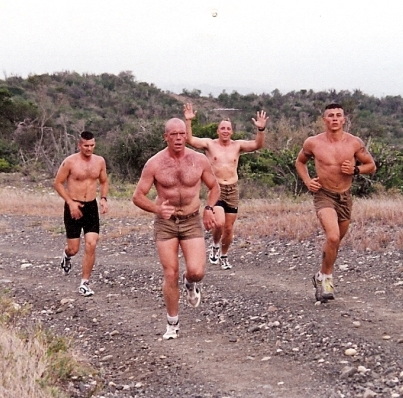
All my duty stations were the best of what I could possibly make them. Despite being isolated on Guantanamo Bay (Gitmo Leeward side), I enjoyed the training in Gitmo, as well as the fantastic diving. We had free run of the ranges and could shoot everything up to TOW missiles. We attempted to diversify our scheme of maneuver. We incorporated small boat patrols, helicopter inserts and extracts, and multiple-day patrols, as opposed to having Marines sit in the observation towers and stare at the Cuban base camps.
Camp Lejeune was certainly not my favorite for liberty operations, but there was some surfing, and I had a small place in Hubert, which was not in the middle of Jacksonville. J’ville has certainly improved a lot since the mid-80s (two Walmarts and a cleaned-up Court Street). CPEN was certainly a lot of fun, with beaches nearby and San Diego and LA not too far away. I played some great rugby with the CPEN Ghostriders Rugby Club. I really enjoyed driving up to the Sierra Nevadas to climb and hike. Oahu was certainly a welcome change after a year in Afghanistan, and I had the opportunity to enjoy some amazing paddleboarding, surfing, and diving, as well as explore the other islands. New Orleans is certainly an interesting city, but once you’ve spent a night or two in the French Quarter, you need to find more productive things to do. I started playing lacrosse again in Hawaii, with the HI Lacrosse Club, and joined the New Orleans Jesters for some fun weekend matches and tournaments. This led to the opportunity to play with the Navy Old Goats in the Vail Shootout. The Goats are a team composed mostly of Naval Academy alumni, but they also welcome other service members to join and play. A great group of warriors to suit up with and take to the field of battle. I have done my best to take advantage of opportunities at every duty station and made the best of it along the way.
From your entire military service, describe any memories you still reflect on to this day.
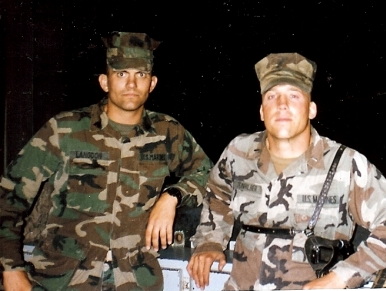
The great Leeward Fire of 1996. We were running a mortar illumination mission on the Leeward fenceline. Despite not being able to fire 60mm High Explosive rounds, this was an opportunity to keep our mortarmen’s skills sharp. We would periodically fire illumination (illum) missions along the fenceline to see how/if the Cuban Frontier Brigade would respond. Unfortunately, during this mission, one of the illum round parachutes failed to open, and the illum round went screaming to the deck in the Leeward brush on our side of the fenceline. Needless to say, it started a brush fire, which was not uncommon. In true Marine Corps fashion, we set about trying to contain the fire with flak jackets and 5-gallon water jugs, but to no avail.
I called in the fire, and eventually, the Navy and Jamaican firefighters showed up with a water truck and helped us contain it. I recall it taking a couple of hours. After a long night, it seemed to be under control. Having spent some time fighting wildfires in Washington State and Montana, my concern was that it would flare up again later that day. In the afternoon, the winds can be pretty intense on Gitmo, and there was the potential for the fire to get out of control. The Navy fire department didn’t seem overly concerned, but with active minefields still present aboard the base, not too far from the fire, it was a bit concerning to me. Sure enough, the next day, the fire started up again, and there was little to slow it down with the strong winds. Despite trying to contain it again, the fire managed to jump the fenceline road onto the Cuban side. If anyone knows the history of the base, the Cuban government decided to strip mine along the entire fenceline. Some saw it as a defensive measure against the possible U.S. Military incursion; however, I believe it was primarily used to keep Cubans from escaping to the base and seeking asylum. Regardless, there were very few records kept over the years by the Cubans to record the exact locations of the hundreds of thousands of soviet anti-personnel and anti-tank mines. As a result, the Cubans did little to maintain the minefields after they were emplaced in the 50s. Well, one can only imagine when the wildfire started burning on the Cuban side of the fenceline. Due to the overgrowth and extensive brush, this did nothing but fuel the fire, and it was not long before these long-neglected mines began cooking off.
We immediately pulled off our firefighting detail away from the fenceline and let the fireworks show begin! The fire burned for the better part of three days, mostly between MOP 1 and MOP 3, and Cuban Base Camps 1 and 2, if I recall correctly. We started having the Marines record the approximate azimuth and distance to each of the explosions in order to record locations of the minefields; however, it soon became a futile effort. It was estimated that over 1,000 anti-tank and anti-personnel mines cooked off or were sympathetically detonated. My Leeward Commanding Officer, Captain Dan Wagner, was not really pleased with the affair and was concerned that the Marine Barracks Commander, Colonel Joe Compasto, would be even less than pleased. The Colonel was well aware of what had happened, and he knew that it was unintentional. I seem to recall him and some of the staff coming over to review our handiwork, and I also seem to recall him having a conversation with the Cuban Frontier Brigade Commander on “the bat phone” to apologize for the fiery inferno. After it was all said and done, no one was relieved of their duties, and the wildfires eventually ran out of fuel and explosives. I recall taking a UH-1 Huey flight along the fenceline to review my handiwork, as some of the Intel personnel, who were taking a lot of pictures, joined us. It was amazing to see the barren moonscape that was left behind, and even more remarkable to observe how close some of the old Cuban trench lines and bunker positions (long since abandoned) were to the fence line. All in all nobody on our side (or the Cuban side as far as I know) were killed or injured as a result of the “Great Leeward Fire of 1996”, and it turned to a great team-building exercise and learning experience for all of the Rifle Security Company Leeward team (not that I, or my CO, were interested in repeating it).
What professional achievements are you most proud of from your military career?
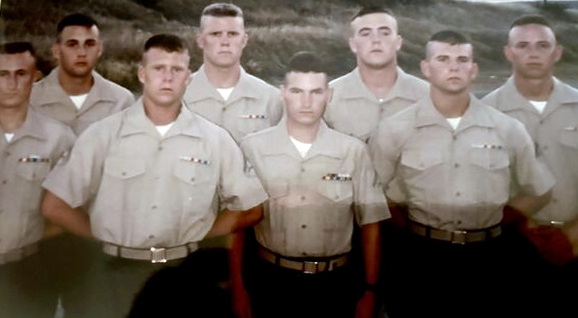
I was extremely proud of my machine gun section and anti-armor teams winning the Division’s crew-served weapons competitions. This involved long days and late nights of studying, combat drills, and physical conditioning hikes. These young men were committed to being the best at what they did and did not disappoint. It did not hurt that I was blessed with some exceptional platoon sergeants, including SSgt Mike Kupchak, who retired as the 1st MARDIV Sergeant Major after being wounded in OIF, and SSgt Chris Yates, who later became an Infantry Weapons Officer (Gunner). I believe we made great teammates, and we were also blessed with some hard-charging young NCOs and junior enlisted Marines, who wanted to perform to the best of their abilities. I was also given the opportunity to attend the Command & Staff College and pursue my master’s degree in Military Studies. I put in a great deal of effort over that year, working with my faculty advisor, Dr. Donald Bittner, and Col. John Favors, to write a thesis on counterinsurgency operations. As a result, I was nominated for a writing award for all my efforts.
Of all the medals, awards, formal presentations and qualification badges you received, or other memorabilia, which one is the most meaningful to you and why?
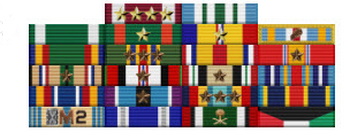
My two combat action ribbons and my Meritorious Service Medal (MSM) for service in Afghanistan. The MSM nomination was drafted by my team, which means a great deal to me. We busted our tails every day and took care of each other as best we could, often under very challenging circumstances. They didn?t have to do it, but they felt that I earned it for my tireless work during a very long deployment, embedded with and advising the Afghan Army.
I ensured that other members of my team were also recognized for their hard work and efforts during this combat deployment. I unfortunately never received an end-of-tour/retirement award for my three years at the Pentagon due to COVID, my wife’s cancer surgery, and departing early to participate in the Hiring Our Heroes Program. I don’t care about a final award, but I would have enjoyed the opportunity to thank my family, friends, and fellow Marines and Sailors with whom I had the honor of serving for over 3+ decades. I owe them all so very much.
Which individual(s) from your time in the military stand out as having the most positive impact on you and why?
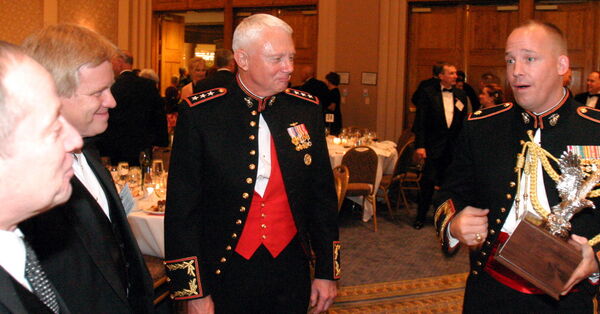
Lt Col E.D. King Retired.
Lt Gen Jack Bergman Retired.
MGySgt J.R. Fields (Retired).
SgtMaj Kufcak (Retired)
CWO Chris Yates (Retired)
Can you recount a particular incident from your service, which may or may not have been funny at the time, but still makes you laugh?
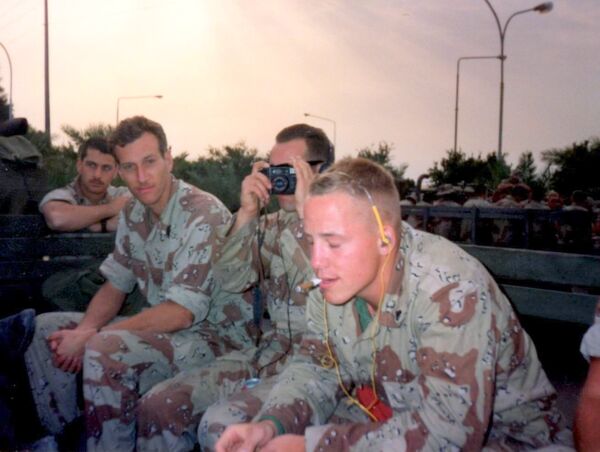
We had a Marine from Bravo Company 1/25 who was almost killed by friendly fire. We had moved towards the Kuwait Border once the ground war kicked off. The company was dug in a “lazy W”. As it was getting dark, they sent one member from each position back to the CP to get hot chow for their position. LCpl Girly got chow for his team and managed to get lost on the way back to his fighting position. There was a security patrol in the area, and they observed a lone figure walking through the desert at night. The patrol took a knee, and Patrol Leader Corporal Dan Dougherty issued a verbal challenge to the unknown individual. The response he got in a stutter was, “It’s Lance Corporal Girly.” Cpl. Dougherty yelled at him to get on the ground, and the response he got was, “But I got chow.” Cpl. Dougherty was less than pleased. After confirming it was one of our Marines, they escorted him back to his position with now cold chow.
What profession did you follow after your military service and what are you doing now? If you are currently serving, what is your present occupational specialty?
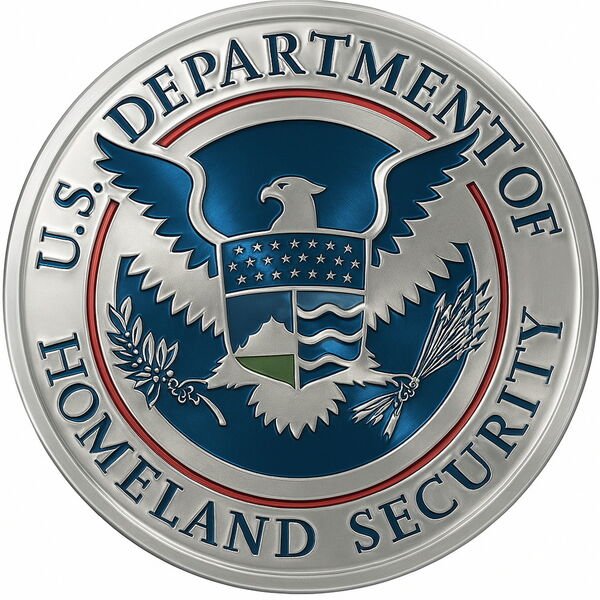
I worked as a contractor from June 2021 to June 2025, supporting the Department of Homeland Security’s Science and Technology Directorate, providing program management and support. Most of the work we do involves developing new technology to support our federal, state, tribal, and local first responders’ needs. I feel that, in some small way, I am still serving and helping our first responders to do their jobs more safely and effectively.
What military associations are you a member of, if any? What specific benefits do you derive from your memberships?
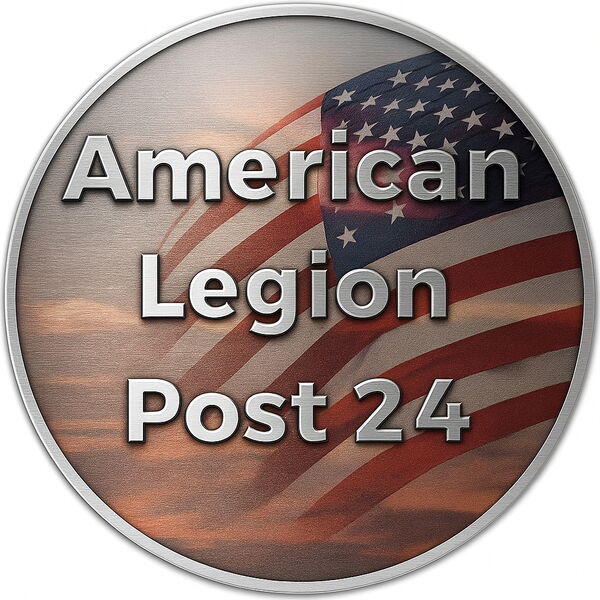
I am a member of American Legion Post 24 in Alexandria, VA, the George Washington Post, and the oldest American Legion Post home. I am also a member of the Next Generation Veteran, which is a part of the American Legion Post here in Vero Beach, FL, made up of post 9/11/2001 veterans who are trying to help other veterans and our community.
In what ways has serving in the military influenced the way you have approached your life and your career? What do you miss most about your time in the service?
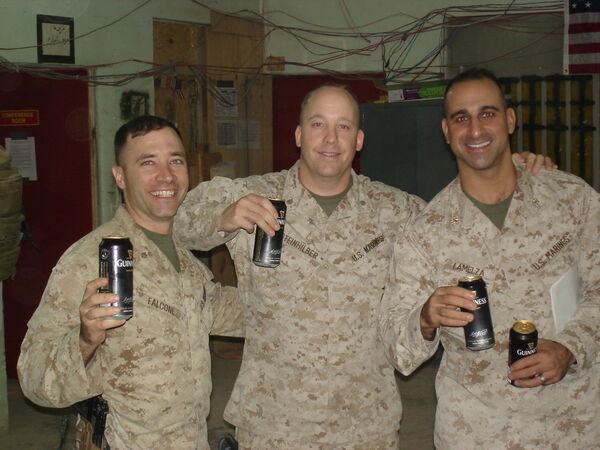
My time in service has taught me how to build meaningful relationships and how to collaborate as a team to solve challenging and often complex problems. I have learned not to take things personally and that we need to do our best to support each other. We all have a role in the team, no matter how big or small. What I miss most is working with some of America’s finest men and women.
Based on your own experiences, what advice would you give to those who have recently joined the Marine Corps?
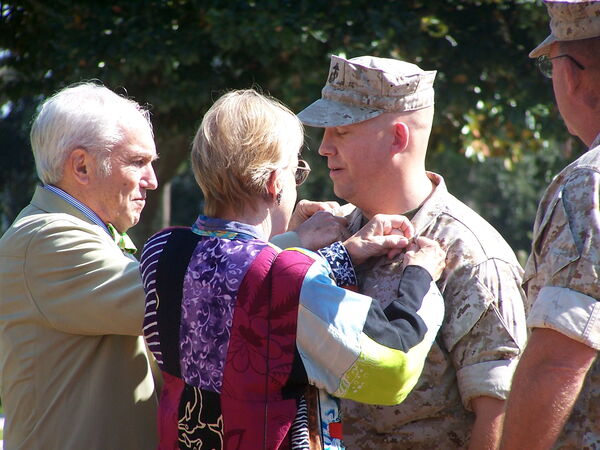
Do your best every day and strive to learn, lead, and be a good teammate. You are blessed to be a part of America’s 911 force in readiness and need to be prepared to go into harm’s way when called upon.
In what ways has TogetherWeServed.com helped you remember your military service and the friends you served with?
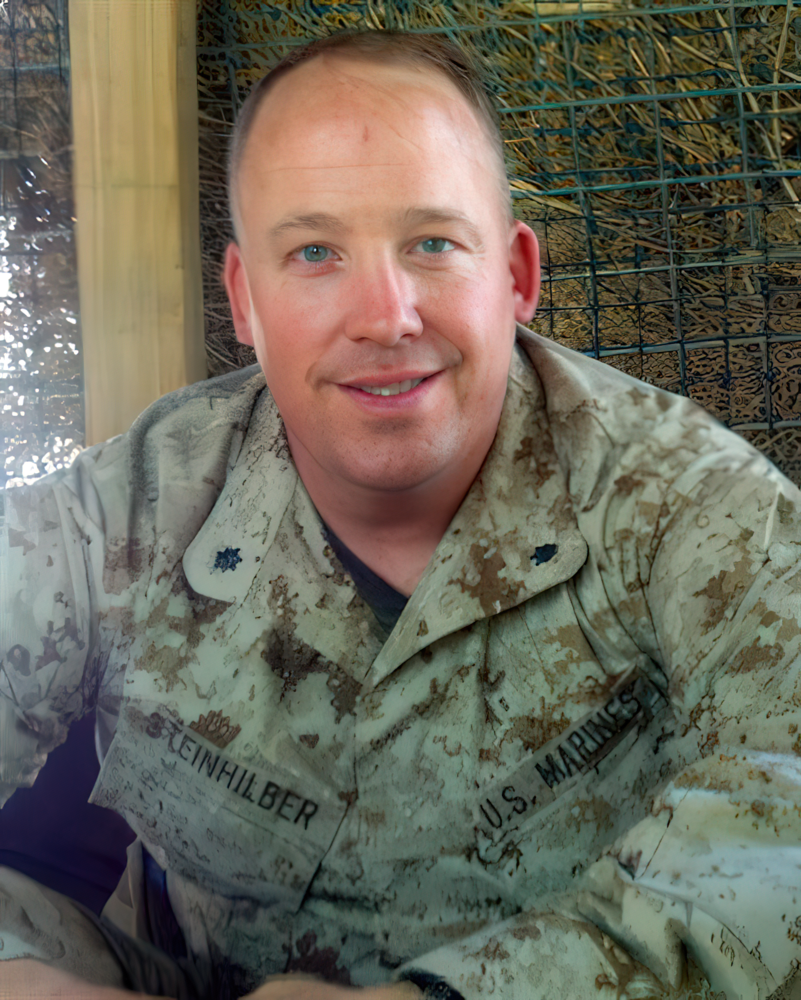
The forum has allowed me to reflect on my decades of service and reconnect with some long-lost teammates.
PRESERVE YOUR OWN SERVICE MEMORIES!
Boot Camp, Units, Combat Operations
Join Togetherweserved.com to Create a Legacy of Your Service
U.S. Marine Corps, U.S. Navy, U.S. Air Force, U.S. Army, U.S. Coast Guard

0 Comments